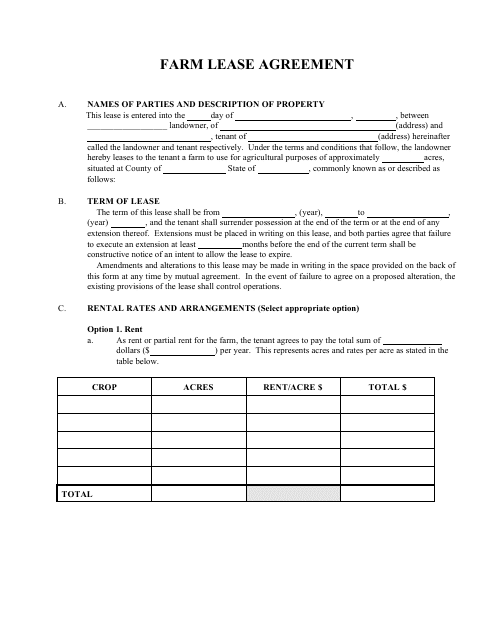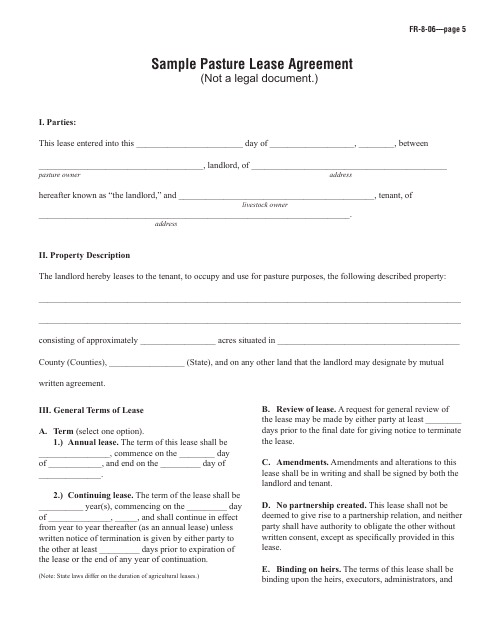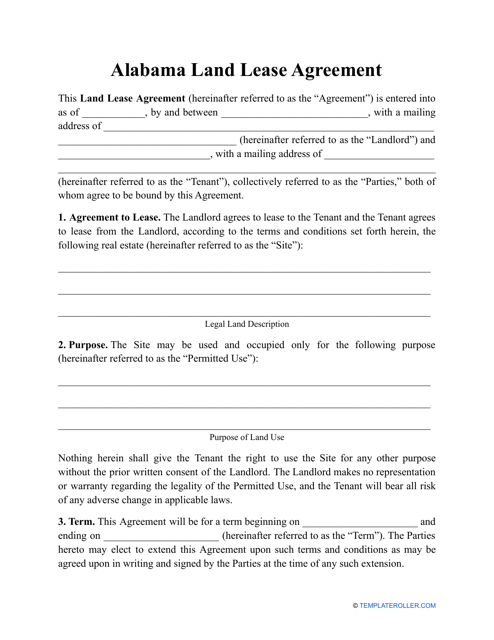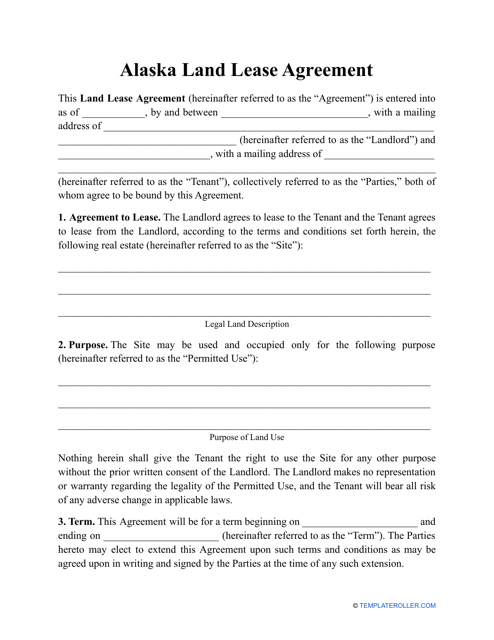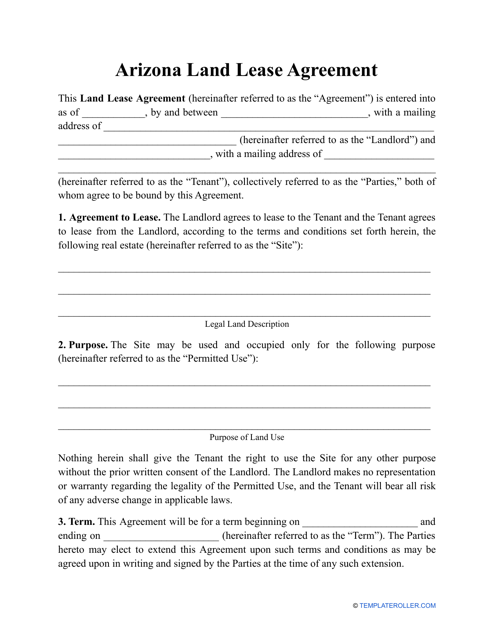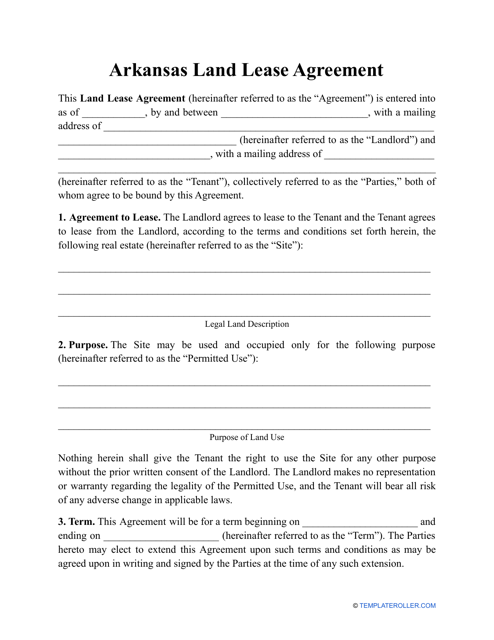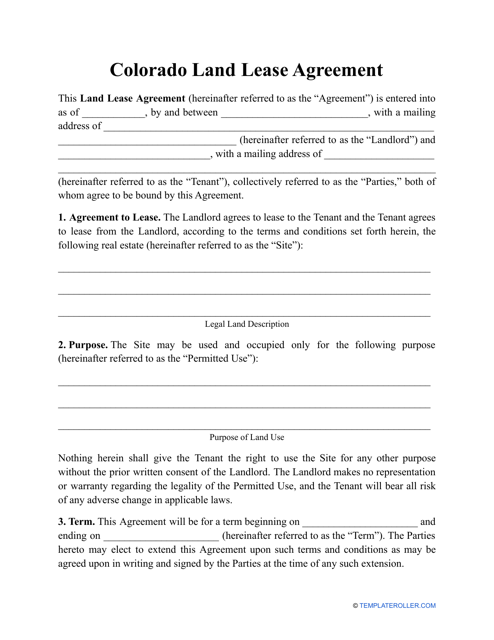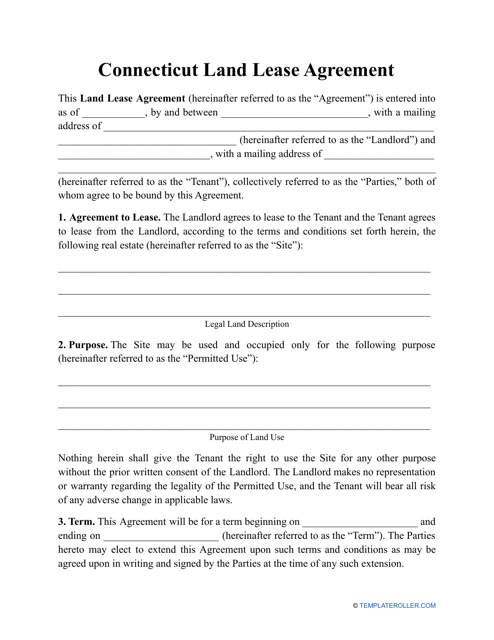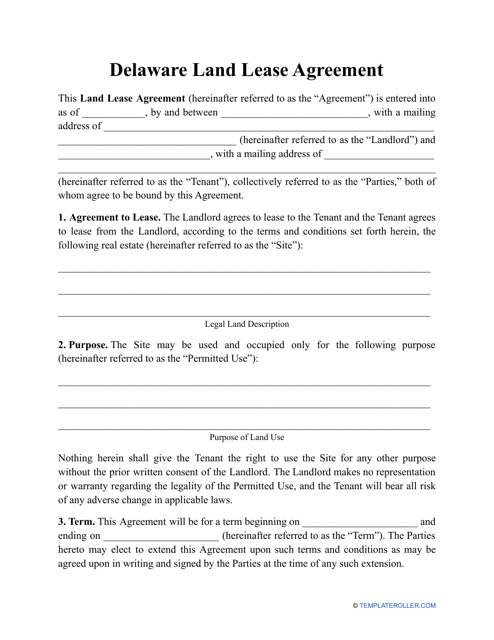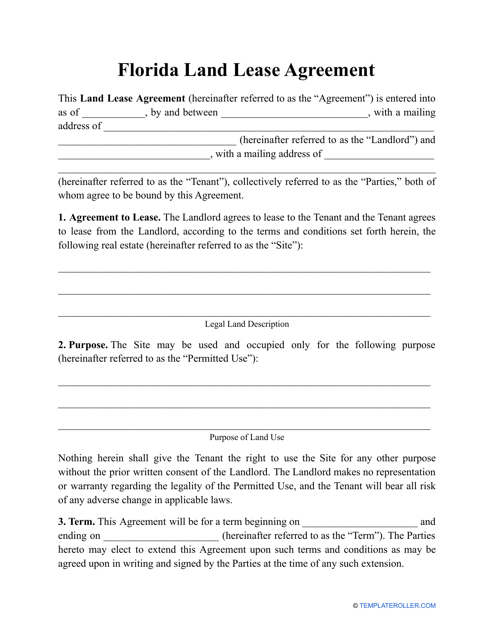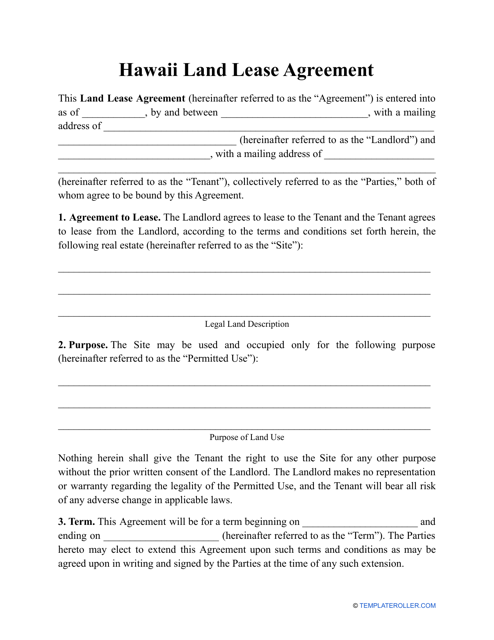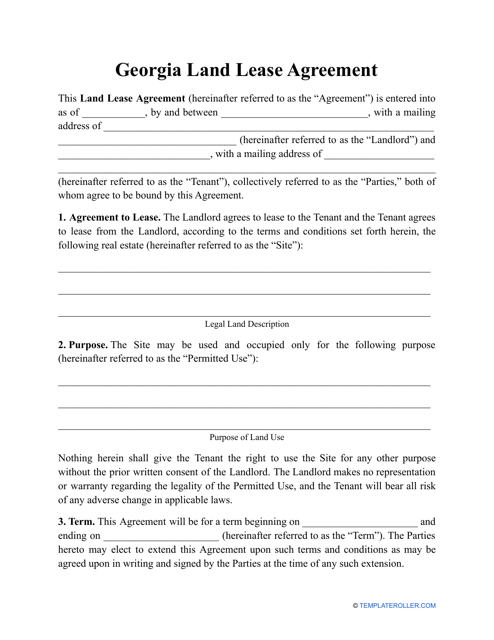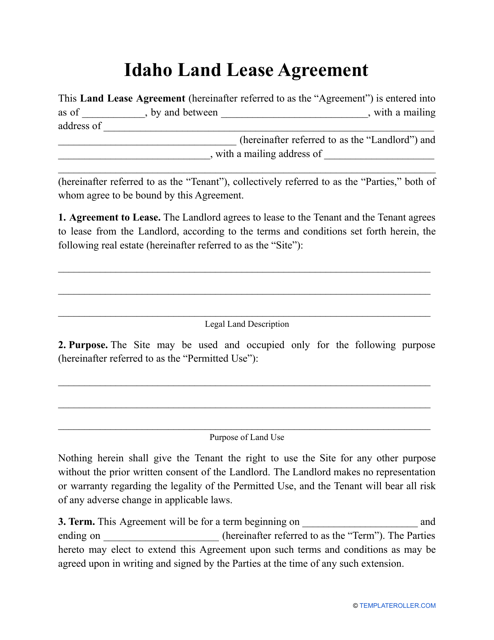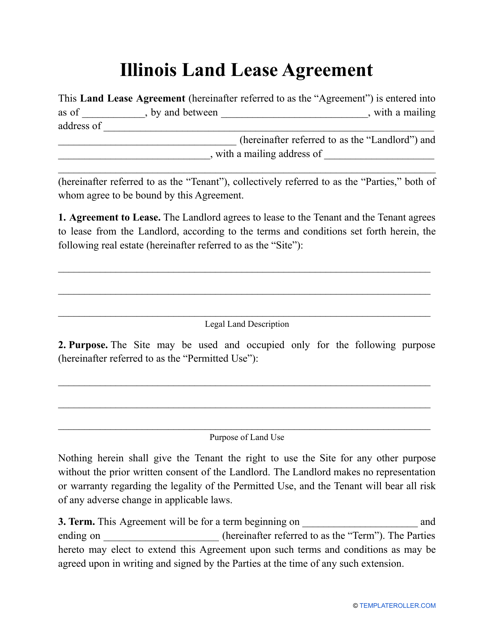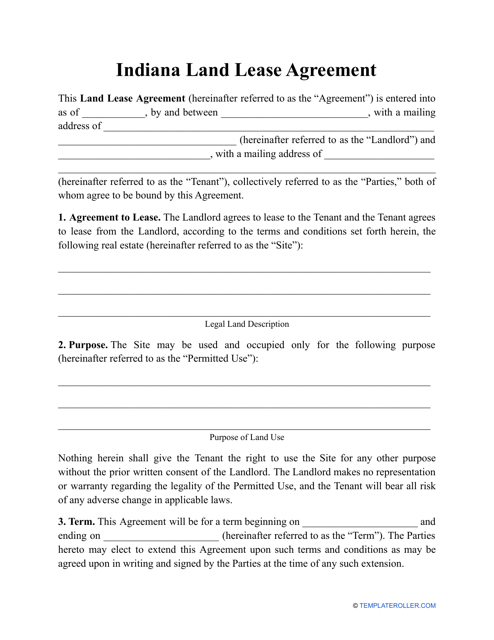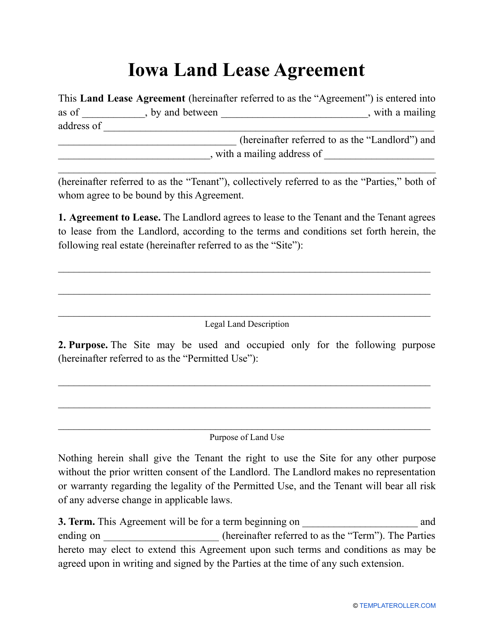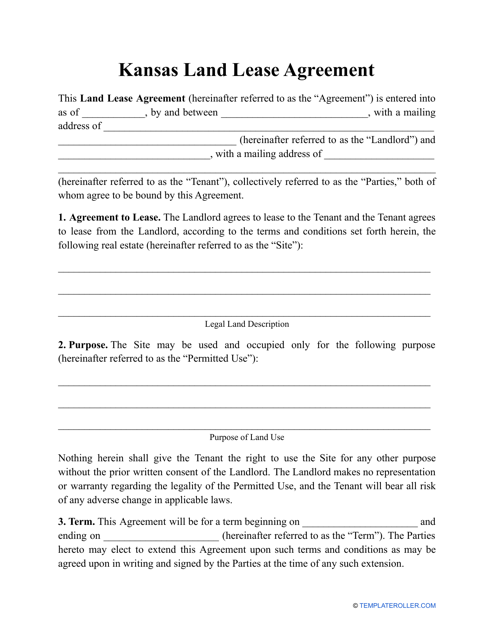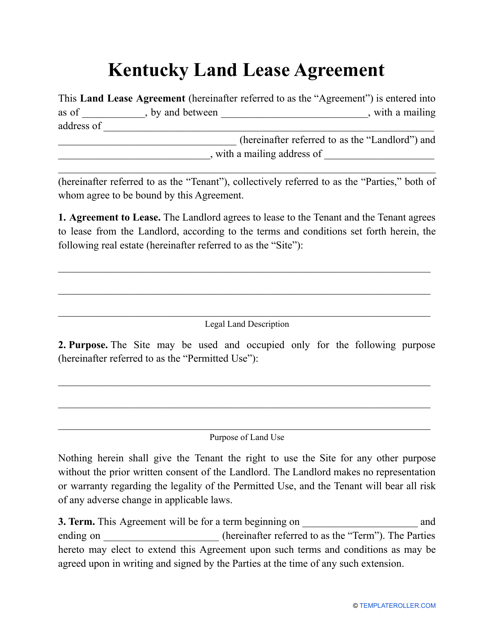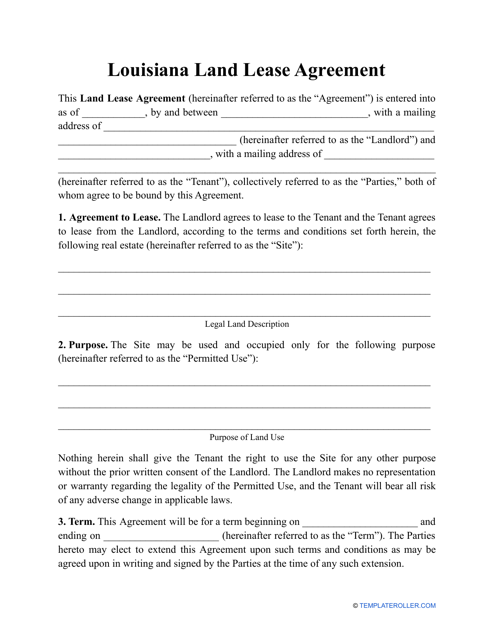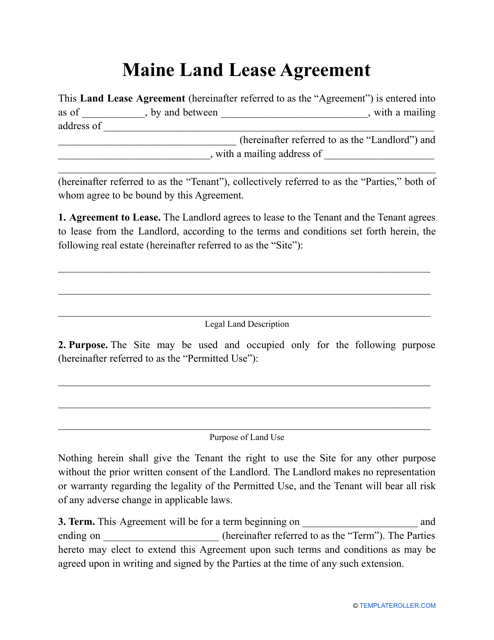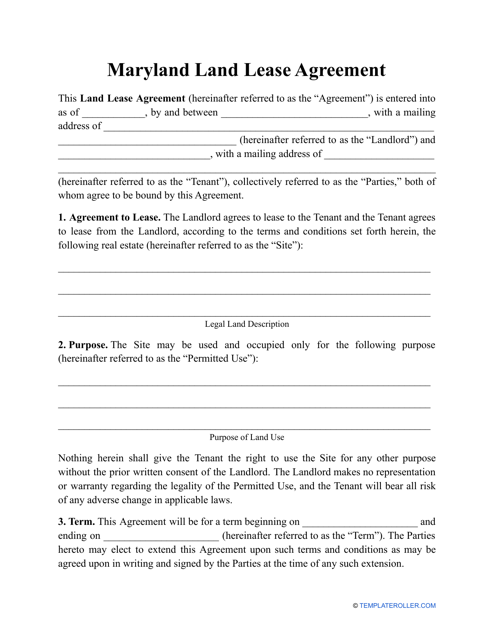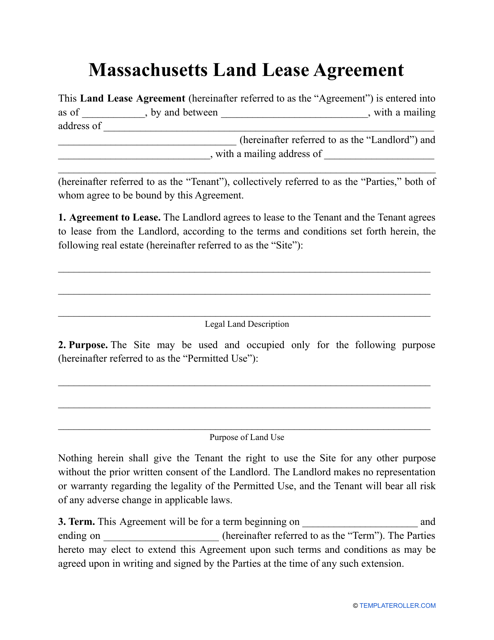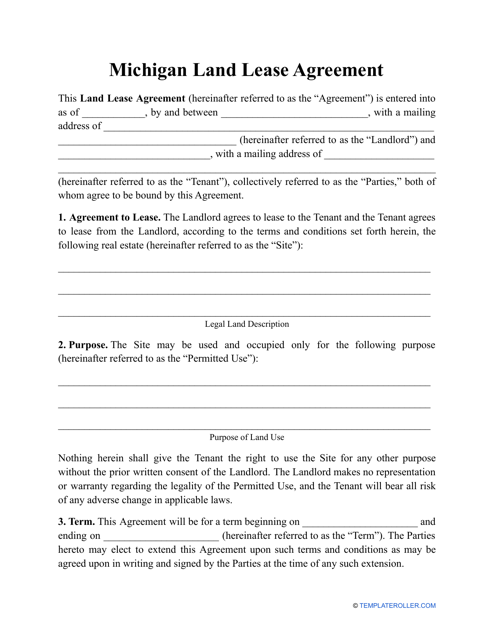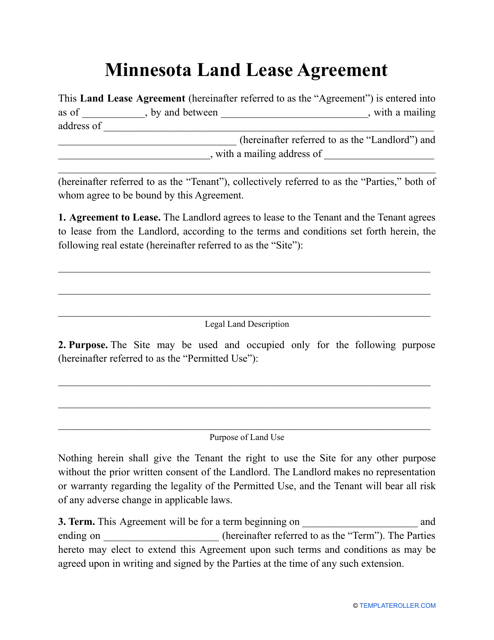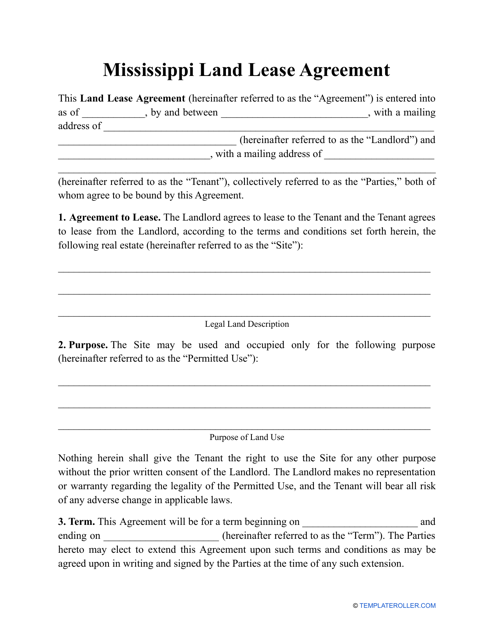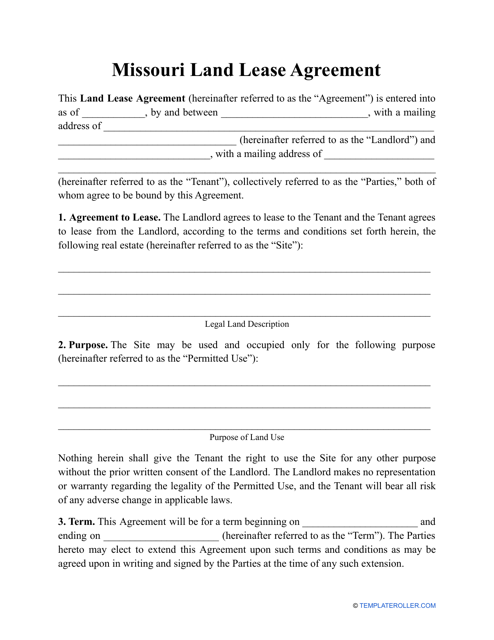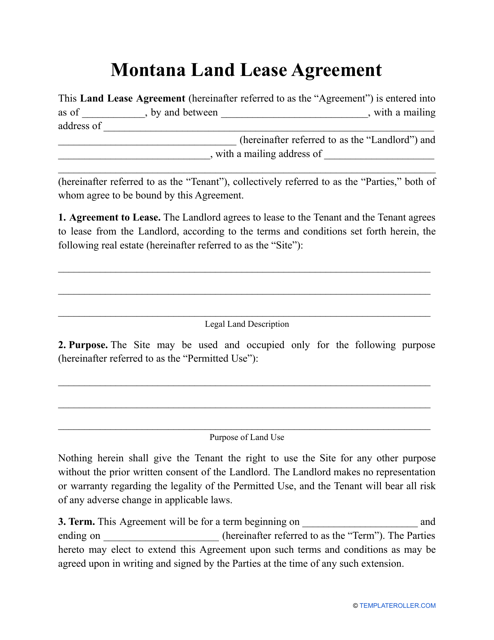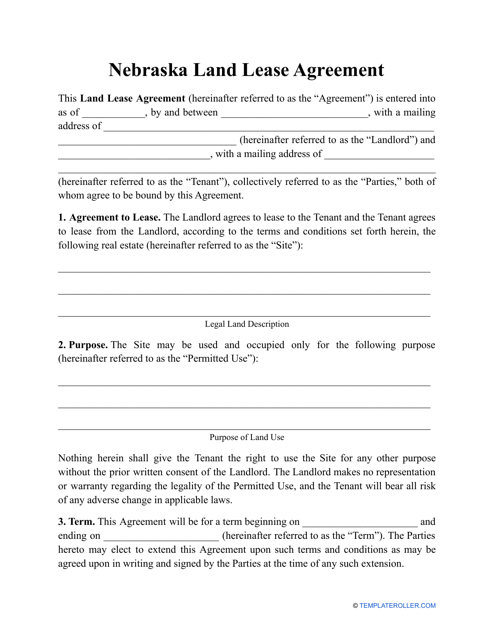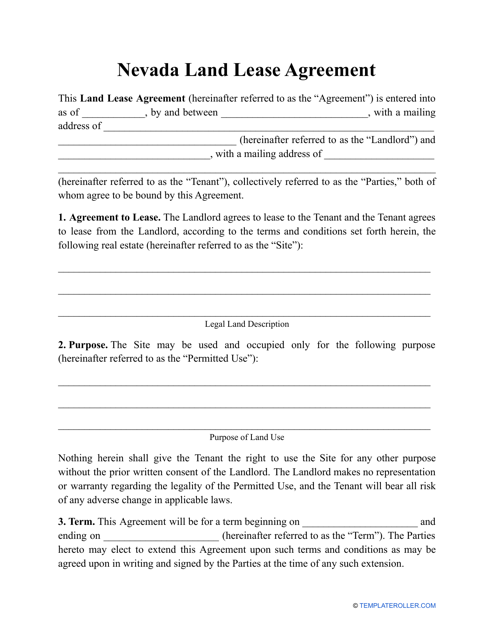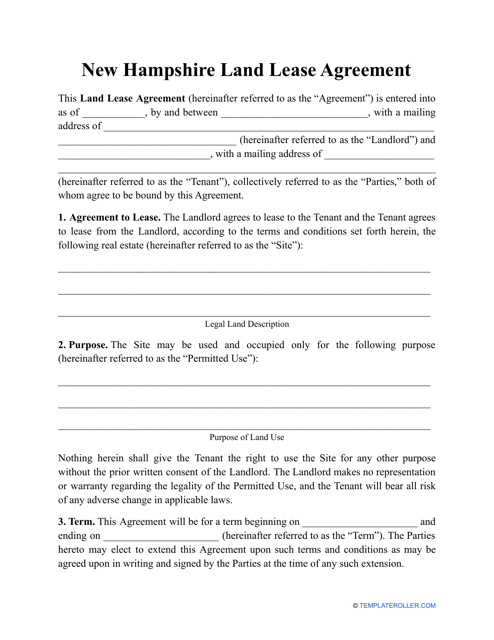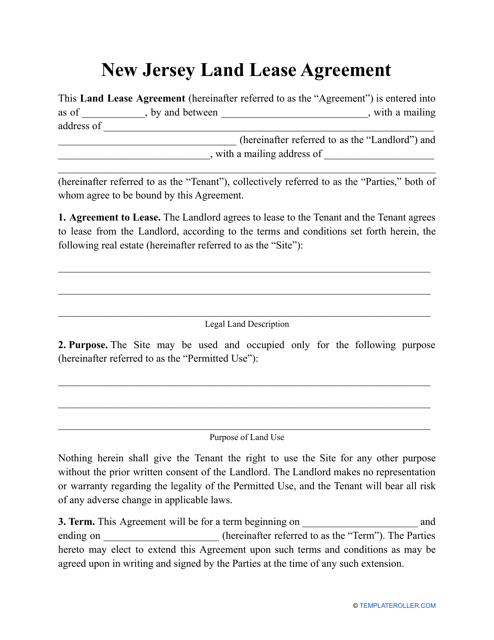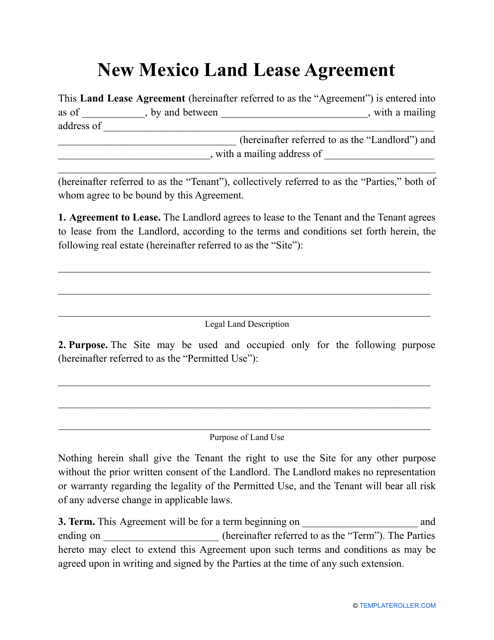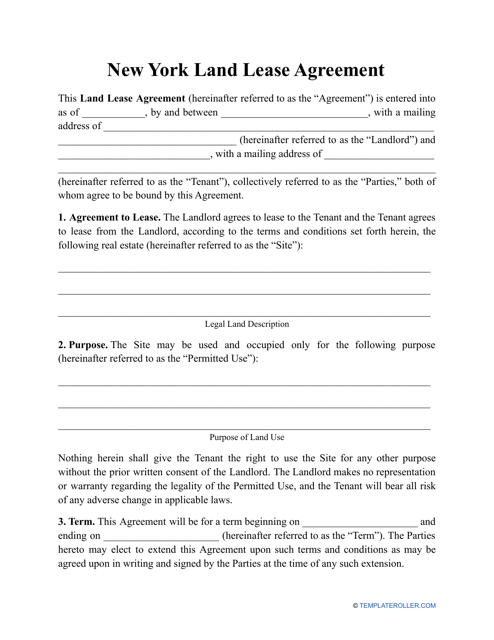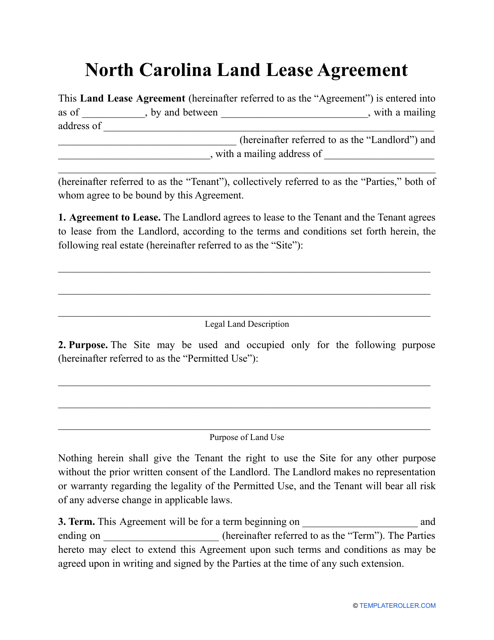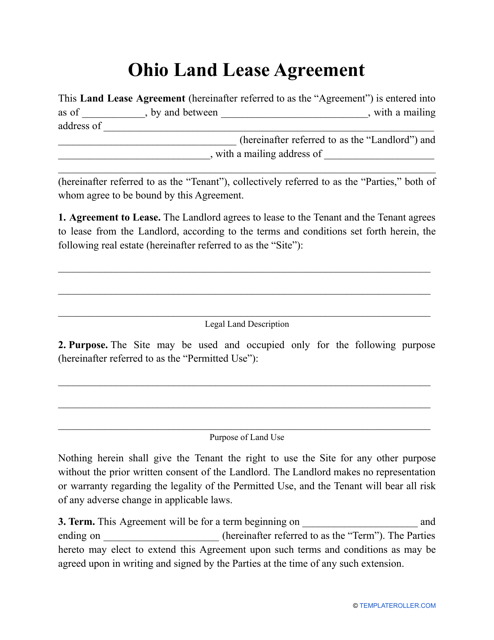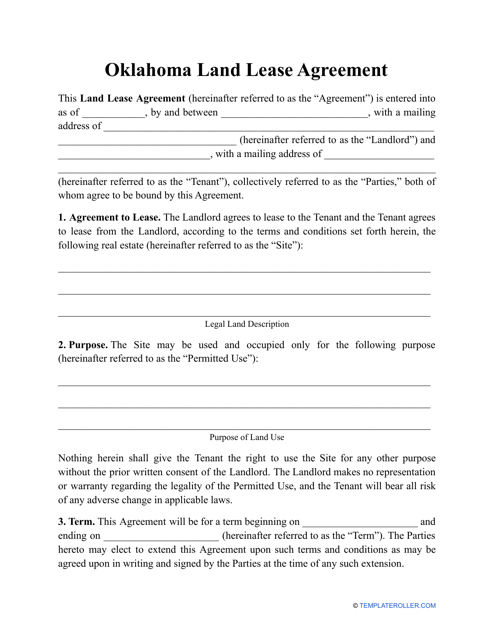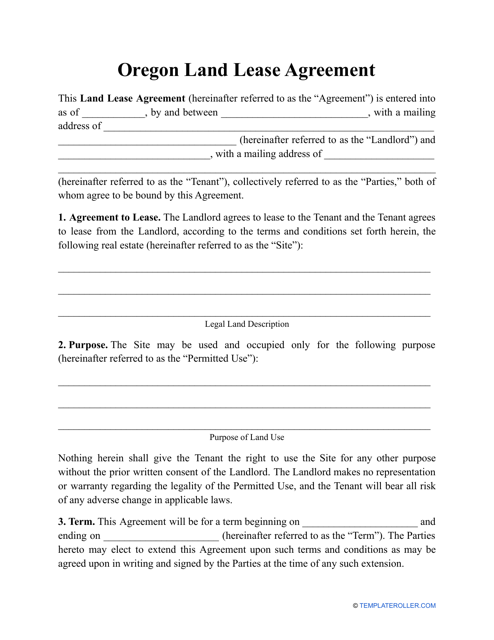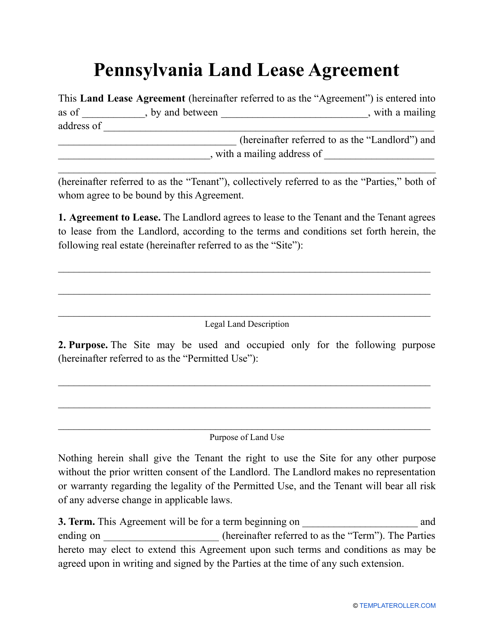Land Lease Agreement Templates by State
What Is a Land Lease Agreement?
A Land Lease Agreement is a written agreement that allows the tenant (lessee) to use a piece of land owned by the landowner (lessor) in exchange for rent payments. This document is very similar to a traditional property lease, and tenants can use it for residential, agricultural, and commercial purposes. An agricultural land lease can include the use of the land as a farm for crops, or pasture for animals like goats and sheep. A commercial land lease sometimes involves building a parking lot or installing a billboard. A residential land lease can allow for a spot in a trailer park for mobile and trailer homes or a right to build a small cabin in the woods.
Alternate Names:
- Ground Lease Agreement;
- Land Lease Contract.
A land lease contract defines the relationship between the landlord and the tenant covering all concerns related to land rentals. It creates a proper agreement binding to both parties. Before you print out your contract, you need to know that there are different requirements and specifics in every state.
Land Lease Agreement Template by State
How to Draft a Land Lease Agreement?
Every land lease contract is subject to bargaining and negotiation, and therefore it is different from any other. However, it is necessary to include the following information to make the agreement valid:
- Names and contact information of the landlord and the tenant;
- Property's full address and description. The land must be safe and habitable. The description of the land must be legally recognized using metes-and-bounds, diagrams, photographs, and a detailed written description;
- Duration of the agreement (the start and the end date of the lease);
- Amount of rent, due dates, and the method of payment. This provision depends on the length of the lease, the intended use of the land, and the amount of land used;
- Amount of security deposit. Often the landowner asks for additional money as security for possible damages to the land;
- Duties and responsibilities of both parties;
- Pet prohibitions and requirements;
- Utilities. State which party is responsible for supplying water, electrical power, and other basic necessities;
- Maintenance. It is recommended to address which party is responsible for maintaining the land in a certain condition;
- Improvements. The tenant needs a landlord's written permission to make improvements or alterations on the land, and the landlord may or may not keep those improvements;
- Access. The agreement must show whether the landlord retains the right to enter the land at certain times;
- Choice of law. The parties choose which state's laws will be used to resolve any possible disputes. Also, it is possible to opt for mediation or arbitration;
- Government regulations. Sometimes it is necessary to clarify which party has to ensure the use of the land does not violate zoning laws.
It is not uncommon for a ground lease agreement to mention insurance, the number of inhabitants or guests that can stay with the tenant, and the subletting clause. Sometimes land leases allow the tenant to construct a permanent or temporary structure, which must be explicitly stated in the contract.
Still looking for a particular template? Take a look at the related templates and forms below:
Related Articles
Documents:
70
This document for a Farm Lease Agreement template, which includes an amendment. It is used to lease a farm for agricultural purposes.
This document is a template for a Pasture Lease Agreement, which is used by landowners and tenants to form a legally binding agreement regarding the lease of a pasture for agricultural purposes.
This document is a contract template that outlines the terms and conditions for leasing land in the state of Alabama. It is used by parties involved in a land lease agreement to document their agreement and protect their rights and responsibilities.
This document is a template for a land lease agreement in Alaska. It provides a framework for landlords and tenants to establish the terms and conditions of a lease agreement for land in Alaska.
This document is a template for a land lease agreement in the state of Arizona. It outlines the terms and conditions for leasing land and is used to legally protect both the landlord and tenant.
This document is a template for a Land Lease Agreement in the state of Arkansas. It outlines the terms and conditions for leasing land and can be customized to suit the needs of the parties involved.
This document is a template for a land lease agreement in California. It provides a framework for tenants and landlords to outline the terms and conditions of leasing land.
This document is a template for a land lease agreement in Colorado.
This document is a template for a Land Lease Agreement specific to the state of Connecticut.
This document is a template for a land lease agreement in the state of Delaware. It specifies the terms and conditions for leasing land, including rent, duration, and other relevant details.
This document is a template for a Land Lease Agreement in the state of Florida. It outlines the terms and conditions for leasing a piece of land in Florida.
This type of document is a land lease agreement template specific to the state of Hawaii. It provides a legal agreement between a landlord and tenant for the leasing of land in Hawaii.
This document is a template for a Land Lease Agreement specific to the state of Georgia in the United States. It outlines the terms and conditions for leasing land and is customizable for various purposes. This type of document is commonly used when one party wishes to rent out their land to another party for agricultural, recreational, or commercial purposes.
This type of document is a template for a land lease agreement in the state of Idaho. It can be used by individuals or businesses to legally lease land for various purposes.
This document is a template for a land lease agreement in the state of Illinois. It outlines the terms and conditions for leasing land and is used by both landlords and tenants.
This document is a template for a land lease agreement in the state of Indiana. It outlines the terms and conditions for leasing land, including rent, duration of the lease, and any special provisions.
This document is a template for a land lease agreement in Iowa. It outlines the terms and conditions of leasing land in the state for a specified period of time.
This document is a template for a land lease agreement in the state of Kansas. It outlines the terms and conditions for leasing land and can be customized to suit individual needs.
This document is a template for a land lease agreement in Kentucky. It outlines the terms and conditions for leasing land in the state of Kentucky.
This document is a template for a land lease agreement in Louisiana. It outlines the terms and conditions of leasing land and is customizable to meet specific needs.
This document is a template for a Land Lease Agreement in Maine. It is used when someone wants to lease land in Maine and provides a basic agreement template that can be customized to fit the specific details of the lease.
This document is a template for a Land Lease Agreement specific to the state of Maryland. It is used to establish the terms and conditions for leasing land in Maryland.
This document is a template for a land lease agreement specifically for the state of Massachusetts. It provides a clear outline and terms for leasing land in Massachusetts.
This document is a Land Lease Agreement template specific to the state of Michigan. It provides a legally binding agreement for the lease of land.
This document is a template for a land lease agreement in the state of Minnesota. It outlines the terms and conditions for leasing land, including rental payments and duration of the lease. Use this template as a starting point for creating a legally binding lease agreement in Minnesota.
This document is a template for a land lease agreement in Mississippi. It is used to outline the terms and conditions between a landlord and tenant for leasing land.
This document is a template for a land lease agreement specifically designed for the state of Missouri. It outlines the terms and conditions of leasing land in Missouri, including rent payments, duration of the lease, and any additional clauses or provisions.
This document is a template for a land lease agreement in Montana. It outlines the terms and conditions of leasing land for a specific period of time.
This document is a template for a land lease agreement in the state of Nebraska. It outlines the terms and conditions for leasing land for a specified period of time.
This document is a template for a land lease agreement in the state of Nevada. It is used to legally establish the terms and conditions of renting a piece of land in Nevada.
This document is a template for a land lease agreement specific to the state of New Hampshire. It outlines the terms and conditions for leasing land in the state, including rental payments, duration of the lease, and responsibilities of both the landlord and tenant.
This document is a template for a land lease agreement in the state of New Jersey. It specifies the terms and conditions of leasing land for a specified period of time.
This document is a template for a land lease agreement in New Mexico. It provides a framework for establishing a lease agreement between a landlord and tenant for the use of land in the state.
This document is a template for a Land Lease Agreement specific to the state of New York. It is used to outline the terms and conditions for leasing land in New York.
This document is a template for a Land Lease Agreement in North Carolina. It outlines the terms and conditions for leasing land in the state.
This document is a template for a land lease agreement in North Dakota. It is used when someone wants to lease land in the state for a certain period of time, typically for agricultural or recreational purposes.
This Form is used for creating a legal agreement between a landowner and a tenant for leasing land in Ohio. It provides terms and conditions regarding the use and rental of the land.
This document is a template for a land lease agreement in the state of Oklahoma. It outlines the terms and conditions of leasing land for various purposes such as farming, ranching, or recreational activities.
This document is a template for a Land Lease Agreement specific to Oregon. It outlines the terms and conditions of leasing land in the state, including rent, duration, and any additional provisions. Use this template to create a legally binding agreement between a landowner and a tenant.
This document is a template for a land lease agreement in Pennsylvania. It outlines the terms and conditions for leasing a piece of land in the state.

